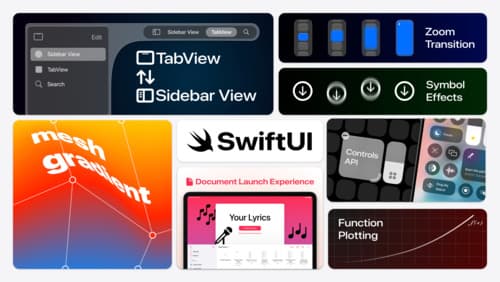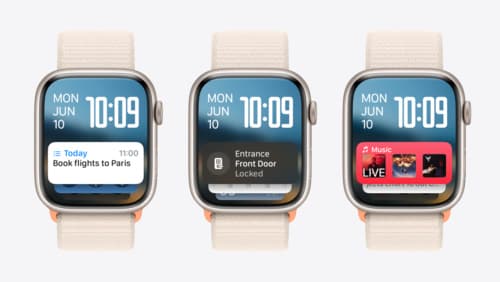widgets
Asked on 2024-09-25
7 searches
Widgets were a significant topic at WWDC 2024, with several sessions discussing their expanded capabilities and new features. Here are some key points:
-
Interactive Widgets: Widgets now support interactivity across iOS, macOS, and watchOS. This means users can perform actions directly from a widget without opening the app. For example, in watchOS 11, you can lock or unlock a door using a widget. This is achieved by using SwiftUI buttons and implementing app intents to specify actions (What’s new in watchOS 11).
-
Accessory Widget Group: A new view template API called Accessory Widget Group allows for more glanceable content in widgets. It supports up to three different pieces of content, which can be interactive or deep link to different parts of your app (What’s new in watchOS 11).
-
Relevance and Context: Widgets can now specify relevant contexts, such as time of day or location, to appear in the smart stack when most useful. This helps ensure that widgets are actionable and appear at the right time (What’s new in watchOS 11).
-
App Intents: App intents allow for the creation of interactive widgets with multiple interactive areas. This includes buttons and toggles that perform actions and update state directly within the widget (Platforms State of the Union).
-
Customization and Configuration: Widgets can be configured with parameters, such as selecting a specific trail to display in a trail conditions widget. This allows for personalized and dynamic widget content (Bring your app’s core features to users with App Intents).
These enhancements make widgets more powerful and versatile, providing users with quick access to app features and information directly from their home screens or watch faces.

What’s new in SwiftUI
Learn how you can use SwiftUI to build great apps for any Apple platform. Explore a fresh new look and feel for tabs and documents on iPadOS. Improve your window management with new windowing APIs, and gain more control over immersive spaces and volumes in your visionOS apps. We’ll also take you through other exciting refinements that help you make expressive charts, customize and layout text, and so much more.

What’s new in watchOS 11
Explore new opportunities on Apple Watch, including bringing Double Tap support to your watchOS app, making your Smart Stack widgets even more relevant and interactive, and displaying your iOS Live Activities in the Smart Stack.

Bring your app’s core features to users with App Intents
Learn the principles of the App Intents framework, like intents, entities, and queries, and how you can harness them to expose your app’s most important functionality right where people need it most. Find out how to build deep integration between your app and the many system features built on top of App Intents, including Siri, controls and widgets, Apple Pencil, Shortcuts, the Action button, and more. Get tips on how to build your App Intents integrations efficiently to create the best experiences in every surface while still sharing code and core functionality.
